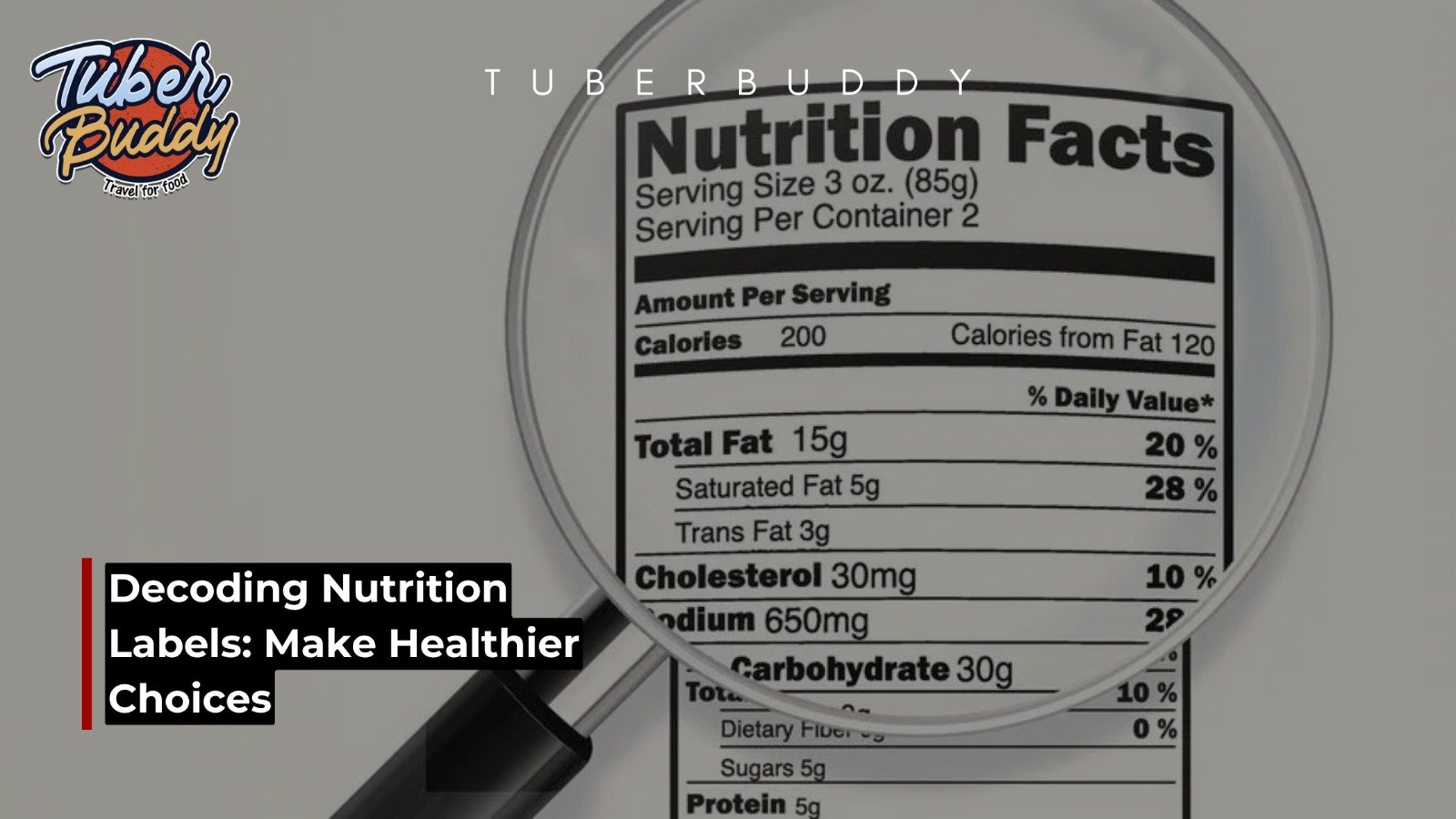Decoding Nutrition Labels: Make Healthier Choices

In today’s world of processed foods and quick meals, knowing how to read a Nutrition label can make a big difference in your health. These labels carry essential information about what you’re eating—yet many people overlook or misinterpret them. This guide will help you decode nutrition facts to make better, more informed food choices every time you shop.
Why Nutrition Labels Matter
Nutrition labels are designed to help you understand what’s in your food. They reveal the calorie content, macronutrients (carbohydrates, protein, fats), vitamins, minerals, and other components like added sugars and sodium. Whether you’re managing your weight, tracking nutrients, or just want to eat clean, reading food labels is a habit worth developing.
The Calorie Calculation Formula
Every label lists calories per serving, but how are those calories calculated? Here’s the simple formula used:
- 1 gram of Carbohydrate = 4 calories
- 1 gram of Protein = 4 calories
- 1 gram of Fat = 9 calories
So the total calorie count is:
(P x 4) + (C x 4) + (F x 9) = Total Calories
P = grams of protein
C = grams of carbohydrates
F = grams of fat
Next time you pick up a product, try calculating the calories using this formula. It’s a good way to double-check label accuracy.
All the information on the label is based on per serving, not the entire package. If a packet has two servings and you consume the whole thing, you must double the calorie and nutrient values.
Also, keep in mind that nutrition facts are based on a 2,000-calorie diet, which is a general reference value. Calorie needs are influenced by personal factors like age, gender, body size, and physical activity levels.
Nutrients to Limit
Some nutrients should be consumed in limited amounts to reduce the risk of chronic diseases:
1. Saturated Fat
Excess saturated fat can raise cholesterol levels and increase the risk of heart disease. Look for foods with a low % Daily Value (%DV) of saturated fat.
2.Too Much Sodium? Read the Label
Consuming excess sodium can raise your blood pressure and increase the risk of heart issues. Many packaged and processed foods have hidden sodium, so it’s important to check the label carefully.
3.Spotting Added Sugars
While natural sugars exist in foods like fruits and dairy, added sugars are introduced during manufacturing. These include syrups, sweeteners, and refined sugar, which offer calories but little nutrition. These include ingredients like:
- High fructose corn syrup
- Maltose
- Dextrose
- Sucralose
- Artificial sweeteners
Too much-added sugar can lead to weight gain, poor gut health, and a higher risk of diabetes.
Now, let’s talk about the good stuff—nutrients that are often under-consumed but essential for your health:
1. Dietary Fiber
A high-fiber diet helps digestion, keeps you full longer, and supports heart health.
2. Vitamin D
Important for bone health and immunity.People who spend little time in the sun often have insufficient Vitamin D.
3. Calcium & Iron
Crucial for strong bones and for preventing anemia. Women and children often need to pay extra attention to these nutrients.
4. Potassium
Helps counteract sodium and supports healthy blood pressure and heart function.
Aim for items that provide 20% or more of the Daily Value to boost your nutrient intake.
📊 What is %DV and How to Use It?
The % Daily Value (%DV) shows how much a nutrient in one serving contributes to your total daily intake.
- 5% DV or less = Low
- 20% DV or more = High
For example, if a snack has 25% DV of sodium, you’re consuming one-fourth of your daily sodium allowance in just one serving!
Use %DV to compare products and choose foods that are low in sodium, added sugars, and saturated fats, and high in fiber, vitamins, and minerals.
Ingredients List: Check the First 3–4 Items
Ingredients are listed in descending order by weight. That means the first few ingredients make up the bulk of the product. If sugar or refined flour is one of the top ingredients, it’s best to avoid it.
Look for foods where the first few ingredients include whole grains, lentils, vegetables, or natural ingredients.
Look for Allergen Information
Always check the allergen advice section, especially if you or a family member has food sensitivities. Common allergens include:
- Milk
- Soy
- Wheat (gluten)
- Peanuts
- Tree nuts
- Eggs
- Shellfish
Some products may also mention “manufactured in a facility that processes nuts,” which is important for those with severe allergies.
Watch Out for These Terms
Be cautious of marketing claims—many products appear healthy but aren’t as nutritious as they seem. Watch out for:
- “Low fat” – Often compensated with high sugar.
- “No added sugar” – Might still contain natural sugars and artificial sweeteners.
- “Natural” – Doesn’t always mean healthy or organic.
- Trans Fat –Even if a label says “0g” trans fat, always check for partially hydrogenated oils in the ingredients.
Final Thoughts
Reading nutrition labels may seem complicated at first, but once you understand what to look for, it becomes second nature. Focus on:
- Total calories based on serving size
- Nutrients to limit (saturated fat, sodium, added sugars)
- Nutrients to increase (fiber, vitamins, minerals)
- %DV to guide your daily intake
- Ingredient order and allergen warnings
The more informed you are, the better choices you’ll make for yourself and your family. Next time you go grocery shopping, take a moment to read the label—it’s your first step to a healthier you!
For more interesting and health related content Follow TuberBuddy !
Don’t just read our blogs —Live it .
